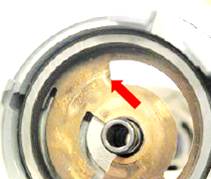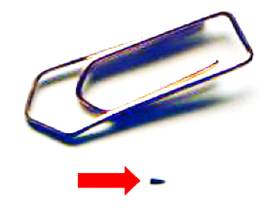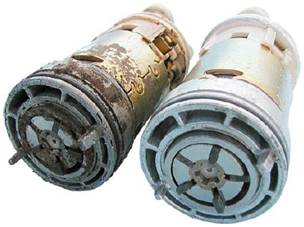Fuel Line

Electric Fuel Pumps TroubleshootingWhenever there is a malfunction on the fuel pump or even a complete failure it is often very difficult for a repair shop to determine the exact cause of the damage. A defective or returned pump can only be judged in the repair shop on the basis of its external appearance and its performance: repair shop staff are not authorised to open a fuel pump in warranty and complaint cases, since otherwise the warranty expires. The decision whether a complaint is justified or not can in many cases only be taken after the fuel pump has been opened and the damage looked at "from the inside". Pierburg can provide these inside views. Over the course of many years, Pierburg has collected the relevant material and knowledge, and share their insights in this article. In the process of dealing with complaints, it is evident that the greater proportion of all returned electric fuel pumps prove to be technically sound. If there are malfunctions in the fuel system or damage to the electric fuel pumps, the main cause is frequently the result of impurities or water in the fuel. Further causes are inferior fuel quality, damage through mishandling or simply incorrect assignment or selection of the fuel pump. It is not always possible to clearly define the individual cause. Consequently "rust particles" produced as a result of water in the fuel should, strictly speaking, fall into the category "damage due to contamination". Another frequent characteristic of poor fuel quality is an excessive proportion of water, thus resulting in corrosion and damage due to contamination. 1. Damage due to contamination
If this is not done to a sufficient extent, e.g. if the pre-filter at the inlet of a fuel pump is clogged, there is the risk of "dry running". Dry running very quickly results in damage to the pump system. If and when taken-in foreign particles enter the fuel pump, for instance due to damaged or missing sieve filters, the rotating parts of the pump system are often jammed straight away and the fuel pump fails completely. Especially during work on the fuel system there is the risk that foreign particles enter the fuel tank. It should be noted that even very small particles of contamination can cause severe damage to the fuel pump as illustrated below.
2. Damage due to water (corrosion) A specific form of damage due to contamination is damage caused by water in the fuel system. Rust or lime particles caused by water in the fuel can clog filters and result in dry running. Lime and rust deposits on or in the fuel pump reduce the running clearance of the moving components. This restricted freedom of motion results in an increased current consumption and reduced delivery rate and can even cause the fuel pump to jam. The term "damage due to water in fuel pump" may be strange at first sight, but the fuel can be soiled by water in various ways. Ambient air always contains a certain amount of humidity, including the air above the fluid level in the fuel tank. The dimension for this amount of water is called "relative air humidity". Colder air can hold less water than warm air, i.e. if the air cools down water can condense. This can become a problem with so-called "garage cars": if vehicles with a relatively empty tank are not driven for a prolonged period, a large amount of water can condense as a result of the great amount of air in the tank. It is therefore essential that a vehicle is refuelled prior to storing it for a longer period. Even splash water can reach the fuel system in various ways. Whether via the ventilation holes of pneumatic valves which are exposed to splash water, e.g. valves in the ACF (activated carbon filter) system, via a scuffed tank ventilation hose, or simply as a result of a leaky or missing tank-cap seal. 3. Biodiesel If the vehicle is run on pure biodiesel, damage and malfunctions can occur more frequently, and more quickly than with other fuels (ie. petrol and diesel). Biodiesel reacts hygroscopically, i.e. it attracts water from the ambient air. Not only can this result in corrosion but also in the growth of bacteria. The good biological degradability of biodiesel goes hand-in-hand with poor ageing resistance and can result in the filters being clogged due to deposited particles.
4. Improper Use Fuel pumps are designed to deliver fuels (petrol, diesel). This statement may be self-evident for most people. From time to time however, there are cases of complaints, in which the fuel pumps have been used to convey other liquids (water, oil, battery acid). It is not surprising that the fuel pump then fails. Nevertheless, they are often sent in as complaints. After opening the pump, Pierburg technicians can often see at first glance that an "inadmissible flow medium" has been used. The determination of this medium may call for laborious chemical analyses in each individual case. 5. Mechanical Damage
In individual cases, even the permanent magnet inside the pump is damaged and its pieces are, as a result, distributed in the pump – and in the downstream system. A fuel pump that has fallen on the floor should therefore not be fitted.
Failures of electric fuel pumps are very rarely due to technical issues with the pump itself - external factors in the fuel system as outlined above are most commonly the cause for a failure. Therefore, when inspecting and installing fuel pumps, ensure that: 1) the fuel pump is being used in the correct way and in the right application, 2) the fuel system is connected and sealed appropriately, and 3) that fuel pumps are handled and installed carefully, using the correct tools and methods.
|
Related Articles Related Downloads |
 Fuel pumps are usually equipped with a wide-meshed "sieve filter" or "pre-filter" installed on the intake side in front of the pump. When these sieve filters are clogged by impurities the first symptoms are an inadequate delivery rate, excessive operating noises from the fuel pump, or the engine misfires. This can ultimately result in failure of the fuel pump and a breakdown of the vehicle. Most modern fuel pumps are rinsed by fuel and at the same time lubricated and cooled.
Fuel pumps are usually equipped with a wide-meshed "sieve filter" or "pre-filter" installed on the intake side in front of the pump. When these sieve filters are clogged by impurities the first symptoms are an inadequate delivery rate, excessive operating noises from the fuel pump, or the engine misfires. This can ultimately result in failure of the fuel pump and a breakdown of the vehicle. Most modern fuel pumps are rinsed by fuel and at the same time lubricated and cooled.


 In particular biofuels of inferior quality may cause deposits with insulating effects on the commutator. A coating with insulating effect on the slideway generates an increased amount of discharges, however, the so-called "brush sparking" causes the premature burning of the carbon brushes.
In particular biofuels of inferior quality may cause deposits with insulating effects on the commutator. A coating with insulating effect on the slideway generates an increased amount of discharges, however, the so-called "brush sparking" causes the premature burning of the carbon brushes. Prior to delivery, all fuel pumps are subjected to a quality and functional inspection in Pierburg's factory. If any mechanical damage does occur, this is in almost every case due to "improper handling". This can range from broken hose connections or damaged electric contacts to cracks and dents in the housing, which clearly indicate that the fuel pump has been dropped.
Prior to delivery, all fuel pumps are subjected to a quality and functional inspection in Pierburg's factory. If any mechanical damage does occur, this is in almost every case due to "improper handling". This can range from broken hose connections or damaged electric contacts to cracks and dents in the housing, which clearly indicate that the fuel pump has been dropped. A lack of knowledge is also frequently evident in that inline-pumps with a screw connection on the thrust side are not secured. The pump is held "by hand" and the connection tightened with a wrench. In the process, the complete pump cover can twist in the housing, the circumferential O-ring can be twisted or damaged, and the pump becomes leaky.
A lack of knowledge is also frequently evident in that inline-pumps with a screw connection on the thrust side are not secured. The pump is held "by hand" and the connection tightened with a wrench. In the process, the complete pump cover can twist in the housing, the circumferential O-ring can be twisted or damaged, and the pump becomes leaky. Summary
Summary